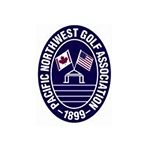Rule of the Month: Is It Spring Yet?
By Sr. Rules Officials: Pete Scholz and Terry McEvilly
Click Here for the Rule of the Month Archive
Water!
The most vital substance for our existence and valued above anything else. Unless we are playing golf. While astronomers spend years looking for water on other planets, we spend years trying desperately not to find it on the course.
Water is found in three different forms; liquid, solid and gas. However, in this Rule of the Month article, we will focus only on the first two, liquid and solid. Test your knowledge of water on the course with the following questions.
Questions: True / False
- A player’s ball comes to rest against an ice cube that had been tossed out of a drink cup. If the ball moves when the player moves the cube, there is a penalty and the ball must be replaced.
- Snow and natural ice may be treated as a loose impediment and removed by the player.
- Snow and natural ice on the ground may be treated as an abnormal course condition and free relief is available.
- Damage to the putting green caused by hail may not be repaired.
- Dew, frost and water must not be deliberately removed from anywhere on the course if the removal improves the conditions affecting the stroke.
- Temporary water on the putting green is between the player’s ball on the fringe (general area) and the hole. He or she may take free relief for the interference on the line of play.
- Free relief from temporary water is available everywhere on the course except when the player’s ball is in a penalty area.
- When a body of water on the course is not marked as a penalty area, a player may take free relief under Rule 16 for an abnormal course condition (Temporary Water).
- When a body of water is not marked as a penalty area, the edge of the penalty area is defined by where the ground slopes down to form the depression that holds the water.
-
If a player’s ball at rest is moved by water coming from a greenkeeper’s hose when watering the putting green, the ball must be played as it lies.
Answers:
- False. Rule 9.4b Exception 4 and Definition of Temporary Water. In this situation, water has been manufactured into the ice cube and becomes an obstruction. When the ball is moved accidentally while the player is removing the movable obstruction (cube), there is no penalty and the ball must be replaced.
- True. Definition of Loose Impediment and Rule 15.1. Snow and natural ice may be removed by the player, but caution should be exercised. If the ball lays anywhere other than the putting green, or the teeing area, and it moves as a result of removing the loose impediment, the player gets one penalty stroke. It is important to note that if natural ice is attached to something, such as a tree, it is not considered a loose impediment and must not be removed.
- True. Definitions of Abnormal Course Conditions, Temporary Water and Rule 16.1. When snow and natural ice are on the ground, the player may choose between treating it as a loose impediment (see question #2) or treating it as temporary water and taking free relief. Maybe a better question would be; why is the player golfing when snow and natural ice are present? Go home and cuddle up with a nice cup of coffee or hot chocolate.
- False. Clarification under Rule 13.1c(2). Generally, damage to the putting green caused by natural forces, such as wind or water, must not be repaired. However, under this Clarification to the Rule, damage caused by the impact of hail on the putting green may be repaired.
- False. Rules 6.2b(3) and 8.1b(8). Dew, frost and water may be deliberately removed from the teeing area, but not anywhere else on the course. For instance, mopping up a small puddle of temporary water on your line of putt on the putting green is not allowed and doing so gets you the General Penalty for improving your line of play. See question #6 for further clarification.
- False. Rule16.1a(1). Temporary water is an abnormal course condition. But only when the player’s ball is on the putting green and an abnormal course condition anywhere on the course intervenes on the line of play is free relief available. In the situation presented, since the player’s ball was in the general area, free relief from intervention on the line of play is not permitted.
- True. Rule 16.1a(2). Free relief from interference by temporary water is available anywhere on the course except when the player’s ball lies in a penalty area. Interference exists when either the ball lies in the abnormal course condition (ACC) or the ACC physically interferes with the player’s area of intended stance or swing. As mentioned previously, when the ball is on the putting green and an ACC intervenes on the line of play, the player is also allowed free relief.
- False. Definition of Penalty Area. Even when not marked as such by the Committee, every body of water on the course is considered a penalty area. When a penalty area is unmarked, it is treated as a red penalty area.
- True. Definition of Penalty Area and Interpretation 17.1a/1. Generally, all bodies of water should be marked by the Committee as penalty areas. However, at times, bodies of water are unmarked or the stakes marking the edge are improperly placed. In these circumstances, the player is not allowed to take advantage of the error and must use his or her best judgment to determine the edge of the penalty area. However, if painted lines on the ground are used to mark the edge of the penalty area, the player must use the line as the edge when taking penalty relief.
- False. Rule 9.6 and Interpretation Outside Influence/1. When a ball is moved by water, it is generally considered moved by a natural force. However, when water is artificially propelled, the water is considered an outside influence and the ball must be replaced.
Published / Last Updated On:
03/01/22








